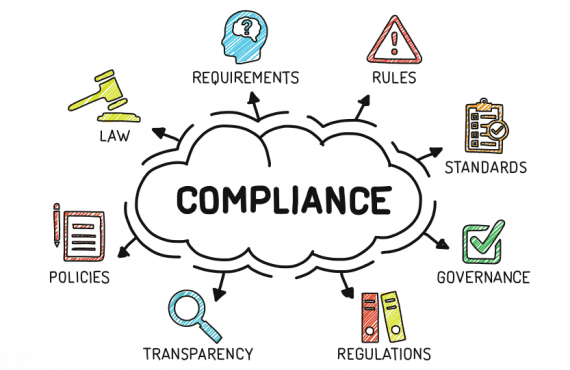By: Betty Frandsen, MHA, RN, NHA, CDONA, FACDONA, C-NE, IP-BC Director of Education, Med-Net Compliance, LLC
and Louise Lindsey, A.A., B.S., M.A., D.D.Editor
“Go for the Gold!” is the mantra echoed by Olympic champions and those involved in the Olympic Games. In the nursing home arena, the gold standard would be to obtain a 5-Star Quality Rating. Yet, when a nursing home is advised that they are a “Special Focus Facility,” there are no balloons launched or confetti dropped and no one celebrates. Why is that? After all, doesn’t the word “special” imply something positive?
What is a Special Focus Facility (SFF)?
The Centers for Medicare & Medicaid Services (CMS) first published a list of what it considered were the worst performing nursing homes in the nation on November 29, 2007. They identified the list of those facilities as Special Focus Facilities (SFF). The purpose of identifying the poorest performing nursing homes was to provide people and their families with what the CMS termed “powerful information [to use] when choosing nursing homes.” At that time, the list consisted of 54 nursing homes from 34 states and was made available on the CMS’ website. It was considered a “key tool for promoting quality of care through transparent public reporting.”
All nursing homes are regularly visited by survey/inspection teams from their State to ascertain if they are providing the “quality of care that Medicare and Medicaid requires.” During these visits, any deficiencies that are identified need to be corrected. Serious problems that are not fixed may result in the nursing home’s licensure being terminated, with the facility no longer allowed to participate in Medicare and Medicaid-something that frequently causes a facility to have to close.
What causes a nursing home to be designated as a Special Focus Facility (SFF)?
Well, it does not happen overnight. There are a lot of missteps and deficiencies that mark the path to a nursing home being designated a SFF. Nearly all nursing homes have some deficiencies-the average number being between 6 and 7 every survey. And, the majority of nursing homes are diligent about correcting problems or deficiencies as quickly as possible.
The red flag for a nursing home waves in these three areas:
• More problems (e.g., twice the average number) than other nursing homes,
• More serious problems (including harm or injury to residents), and
• A pattern of serious problems over a 3-year period prior to being put on the SFF list.
Often, a nursing home struggling in the areas just described will somewhat sporadically improve the deficiencies enough to be in compliance for one survey; but, by the next survey significant problems would have resurfaced. This kind of “yo-yo” or “in and out” compliance rarely addresses the “systemic problems” that cause the “repeated cycles of serious deficiencies.” This is the situation that is happening when a nursing home is designated a SFF.
What is the process involved with being a Special Focus Facility (FSS)?
The CMS expects that an in-facility visit by a survey team will occur twice as often for the SFF facility as for other nursing homes or about two times per year. The goal of the CMS through the SFF initiative is that a nursing home will substantially improve and be able to maintain that improvement through a period of time covered by two surveys. However, if a nursing home does not make significant progress and serious problems persist, CMS will impose more stringent actions that may include fines (civil money penalties) or being disallowed from continuing as a Medicare and Medicaid provider.
The expectation by CMS is that “within 18-24 months after a facility is identified as an SFF nursing home,” the outcome will be one of the following: improvement and graduation, termination from Medicare, or extension of time.
In the most recent 2017 Special Focus Facility Program Update from CMS issued March 2, the list of SFFs is broken down into five different categories representing 5 different statuses, and includes 108 nursing home facilities. They are as follows:
- New Additions – Nursing homes newly added that have not yet had a standard survey since being added to the list.
14 Facilities Listed - Not Improved – Nursing homes that have failed to show significant improvement in at least one survey since being added to the list.
31 Facilities Listed - Improving – Nursing homes that have shown significant improvement that is indicated in the most recent survey.
39 Facilities Listed - Recently Graduated – Nursing homes that are improved and have sustained significant improvement through 2 surveys (about 12 months).
23 Facilities Listed - No Longer in Medicare and Medicaid – Nursing homes that were terminated by CMS from participating or voluntarily chose not to continue participation.
1 Facility Listed
The benefit to nursing homes from learning about Special Focus Facilities is to make sure that the CMS never has reason to put your facility into that category. One way to ensure good standing is to be proactive when it comes to compliance of CMS regulations; and, whenever a problem arises, correct it quickly and thoroughly.
A good goal is to strive to obtain the CMS’ 5-Star Quality Rating. To find out how we can work together to improve your compliance, visit our website mednetcompliance.com.
For more information regarding this article, call 609-454-5020 or email info@69.195.86.139.com.
































































